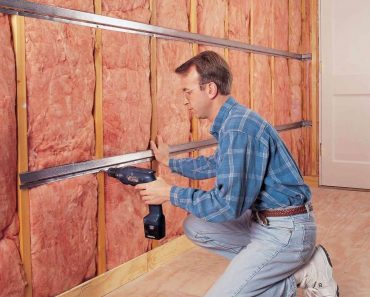Whether you’re an experienced woodworker or a beginner just starting to explore this timeless craft, setting up a garage-based woodshop can be an exciting endeavor. But before you can start crafting intricate wood pieces, you need to make sure your workshop is adequately set up. Let’s dive into this comprehensive guide on how to create your ideal home workshop.

Why Set Up a Home Workshop? 🏠
Creating a dedicated workspace for woodworking activities can significantly enhance your productivity and efficiency. It allows you to:
- Organize your tools in a way that makes your workflow smoother.
- Focus better, thanks to a dedicated, distraction-free environment.
- Keep your projects safe and in one location, preventing loss or damage.
- Avoid messes in your living areas by confining sawdust and wood scraps to one spot.
Important Note: “Remember, safety should be your top priority when setting up your home workshop. Always follow manufacturer’s instructions for tool usage and storage, and invest in safety gear like goggles, ear protection, and dust masks.” 📝👷
Choosing Your Space: The Garage Advantage 🚗🔧
The first step in setting up your workshop is selecting the right space. While a spare room or basement might suffice, a garage is typically the most suitable choice for a few reasons:
- Space: Garages are often spacious, offering plenty of room to house all your tools and materials.
- Ventilation: Working with wood generates dust and fumes; garages generally have good ventilation to handle this.
- Access: Garages are usually accessible from the outside, making it easier to bring in large pieces of wood or other materials.
Essential Woodworking Tools ⚙️🔨
Before setting up, it’s essential to gather all the necessary tools. Here’s a list of essential tools that every woodworker should have:
| Tool | Purpose |
|---|---|
| Hand saw | For cutting wood |
| Power Drill | For making holes |
| Miter Saw | For making accurate crosscuts & miters |
| Circular Saw | For cutting large pieces of wood |
| Jigsaw | For making curved cuts |
| Router | For hollowing out an area in hard materials |
| Sander | For smoothing surfaces |
Important Note: “As your skills and interests develop, you can add more specialized tools to your workshop. The most important thing is to start with the basics and learn to use them effectively.” 🎯👍
Organizing Your Workshop 🗄️🔍
Organizing your workshop can make your work easier and more efficient. Consider the following tips when organizing your tools and materials:
- Zoning: Divide your workshop into different zones, such as a cutting zone, assembly zone, and finishing zone, to streamline your workflow.
- Storage: Utilize vertical space with wall-mounted racks and shelves for tools.
- Mobility: Consider investing in mobile workbenches and tool carts, which can be moved around as needed.
Pro Tip: “Place your most-used tools within arm’s reach of your primary workspace to minimize disruption and maintain efficiency.” 💡👌
Creating a Safe Workspace: Non-negotiables 🚦⚠️
Safety is paramount in any woodworking space. Here are some key points to consider:
- Fire Safety: Keep a fire extinguisher in an easily accessible place. Remember, wood and sawdust are flammable!
- First Aid: Always have a first aid kit stocked and handy.
- Ventilation: Ensure that your garage has sufficient ventilation. An air filtration system can help remove wood dust, which can be a health hazard.
- Lighting: Good lighting is essential to prevent mishaps. Install adequate overhead and task lighting.
Important Note: “Never overlook safety in your workshop. Always use your tools correctly, wear safety gear, and keep your workspace clean and tidy to minimize risks.” 📚💼
In Conclusion: Crafting Your Space for Craftsmanship 🎈🎉
Establishing your home woodshop is a journey that will bring you immeasurable joy and satisfaction. It’s about creating a space where you can fully immerse yourself in your craft. Take your time in setting up, ensure you prioritize safety, and organize your workshop in a way that supports your workflow. Happy woodworking! 🎊👏
Key Takeaway: “A well-set up workshop is an enabler of creativity and productivity. It will aid your journey into woodworking, allowing you to hone your skills and create beautiful pieces in a safe, organized, and dedicated space.” 🌟👏





